Olympus Mju II (Stylus Epic) 35mm camera — A quick overview
The Olympus Mju II, also known as the Olympus Stylus Epic in the United States, is a point-and-shoot film camera that became popular due to its relatively high quality lens and compact size. Introduced by Olympus in 1997, it is easy to carry around, thanks to its small design. It won design awards when it came out and has remained popular with those shooting on film.
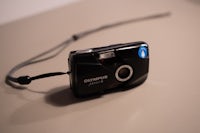
The Olympus Mju II Camera is very compact.
General features
- Lens: The Mju II is equipped with a fixed 35mm f/2.8 lens, which produces sharp, clear images most of the time.
- Design: The Mju II is very compact and features a clam-shell design, which adds to its durability by protecting the lens when it's not in use.
- Weather Resistance: The Mju II is weather resistant and quite robust for outdoor use.
- Built-in Flash: The Mju II comes with a built-in flash.
- Autofocus: The camera includes an active, multi-beam auto-focus system.
- Settings: You can toggle between the following modes: Auto, Red-Eye, No-Flash, Flash, Night-Mode and Night-Mode combined with Red-Eye. That's it, not much more available when it comes to settings.
- Film: The Mju II uses 35mm film and supports DX encoding for automatic film speed setting.
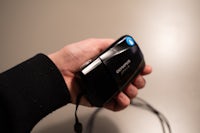
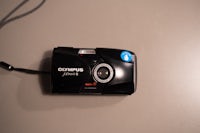
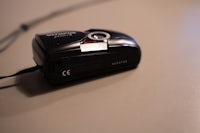
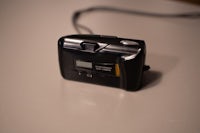
Personal opinion
I bought one a few years ago and it has remained a favorite for its combination of simplicity, compact size, and image quality. Then (and likely still!), I knew very little about shooting on film and therefore I searched for a camera that was automatic and beginner friendly like the Mju II.
I've grown to like the constraints of it and since I have a feeling for how it behaves and what the outcome will be I use it in a way that has previously provided me with results that I like.
Film to use
I've tried a few different films over the years but I keep coming back to Kodak Portra 400 (color) and Kodak TRI-X 400 (BW). Below are some examples. I mostly get my film developed at Foto Kotti in Berlin.
A few gotchas and tips
The following issues are things that I have run into and seem to be common.
- Loading film: I always need to pull a bit of film before loading the camera so that it picks it up. Sometimes a. bit of trial and error.
- Error: It happens that you get an error on the screen (screen shows a blinking "e") and nothing works. To fix it, take the battery out and insert it again. Sometimes the camera needs a little help with loading the film (if you are inserting a new film), so pulling a bit does the job. This has always worked for me at least.
- Flash: On auto (the default), it almost always shoots with flash. I often turn it off if I am taking a picture in daylight. The flash can have a nice effect for portraits though, also when it is bright.
- Aperture: It almost always goes for the maximum aperture of the lens (f/2.8).
- Screen brightness: It is common that the screen is a bit dim after all these years, so it can be a bit hard to read.
- Automatic focus: It does happen occasionally that the images you shoot are not in focus, but I find it to be rare. Mainly I had to learn that you can't shoot too close up to the subject. Half a meter (20 Inches) should be enough.
- Low light: Like with any camera I guess, it has a harder time in low-light situations. I basically do not use my Mju II unless it is quite bright. Portraits with flash might turn out OK. The camera has a night-mode setting, but I have not found it very helpful.
- Red Eye: Since I shoot most portraits with flash, red-eye is definitely an issue. It can be easily fixed in Lightroom or other post production software. The camera also has a red-eye setting that sometimes helps.
Photo examples
Below are some examples taken with different film. The environment varies in each shot, but you should see the character of the camera and film used.

At Potamos Beach in Crete. On Kodak Portra 400.

Clouds in a blue sky.
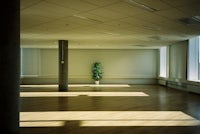
Office at Höfðatorg, Reykjavík, Iceland. On Kodak Portra 400.

A greenhouse in the Western part of Iceland, close to Borgarnes.

Outside of an ice cream parlor in Saxony, Germany.